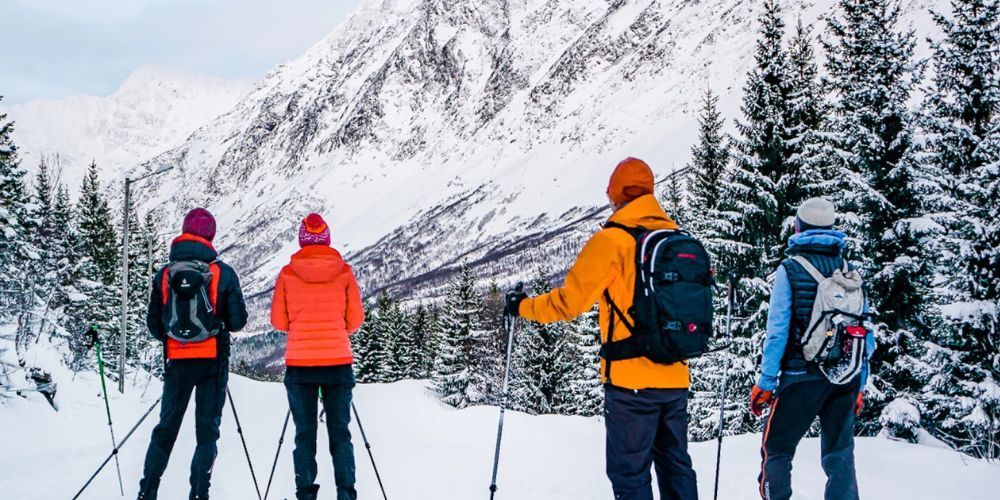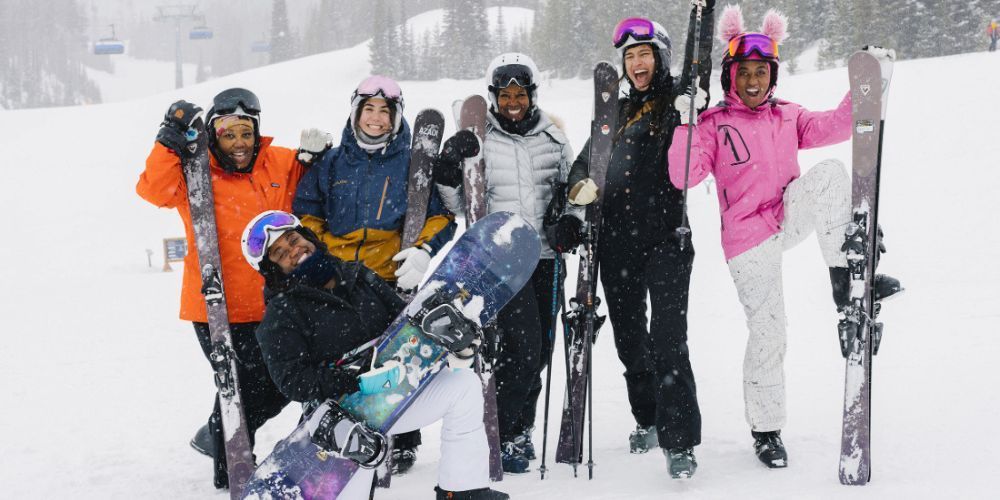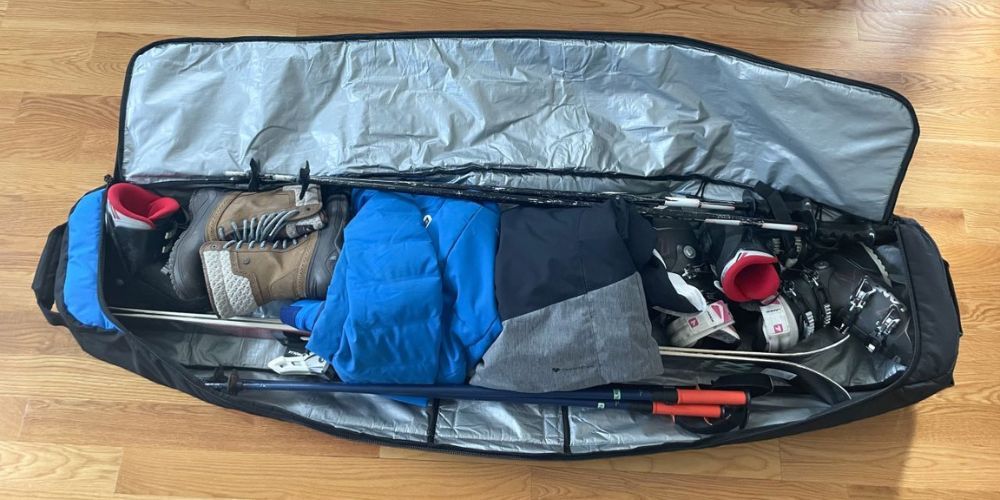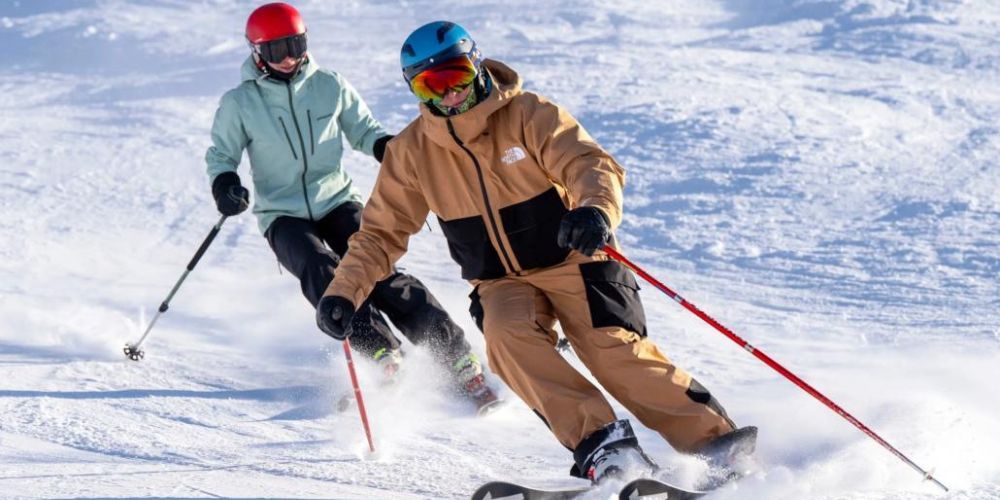William Flaiz is a lifelong athlete and outdoor enthusiast with a deep passion for adventure and sports. With over two decades of experience competing in marathons, triathlons, adventure races, and a wide range of recreational activities, William brings a wealth of knowledge to Sports and Nature Gear. Having explored 49 U.S. states and over 25 national parks, his extensive travels and hands-on experience with gear and gadgets provide readers with practical, expert advice for their own outdoor adventures. Whether it’s running, biking, kayaking, or hiking, William’s insights are invaluable to anyone looking to enhance their experience in the great outdoors. Read his full bio.
Ski Helmets Buying Guide: Reviews and Features to Consider
Choosing the perfect ski helmet isn't just a matter of style—it's a crucial decision that can make or break your time on the slopes. The crisp mountain air and thrill of carving down snowy peaks demand not only skill but also dependable protection. Fortunately, finding that balance between safety, comfort, and price doesn't have to be daunting when you know what to look for.
This guide dives deep into expert reviews and real user experiences so you can confidently select the right gear. After extensively analyzing key features such as MIPS technology, ventilation systems, and safety certifications, we've synthesized top recommendations for every type of skier. Let's begin by exploring some of these leading ski helmet options that promise both security and satisfaction on your next adventure.
When choosing a ski helmet, it's essential to consider factors such as comfort, fit, safety features (like MIPS technology for impact protection), ventilation systems to manage temperature, and the specific design tailored to your skiing style. Additionally, make sure to check sizing options carefully to ensure a proper fit for optimal safety and comfort while on the slopes.
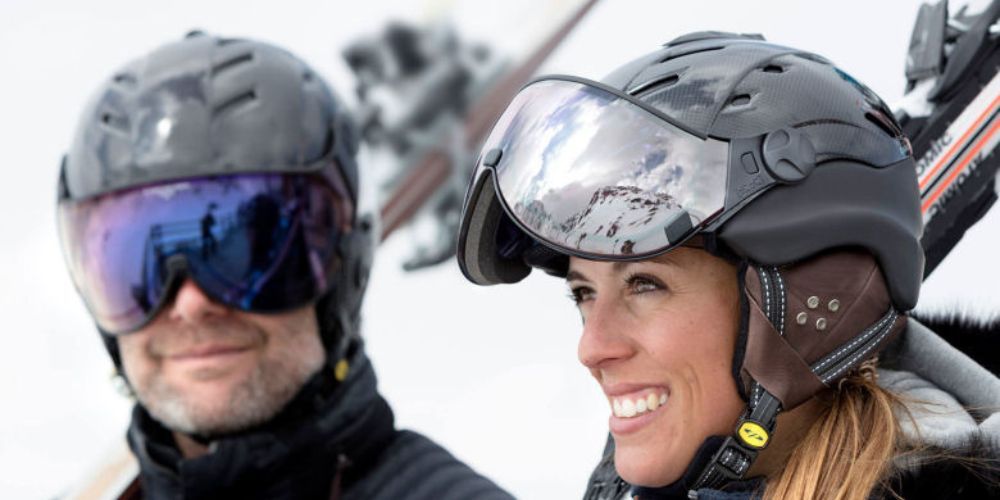
Top Ski Helmet Recommendations
The Smith Vantage MIPS Snow Helmet stands out with an impressive rating of 4.7 out of 5 stars and is renowned for its Advanced Hybrid Construction. This innovative design combines a lightweight in-mold shell with a hard-shell exterior, providing exceptional durability without sacrificing comfort. One of its hallmark features is the 21 vents that allow for effective airflow and temperature regulation, ensuring you remain comfortable even during intense skiing sessions. The inclusion of MIPS technology, which effectively diminishes rotational forces during impacts, underscores its commitment to safety. For those who prioritize both protection and comfort, the Smith Vantage presents an exemplary choice priced around $220.
Complementing this offering is the Giro Ledge MIPS Snow Helmet, which has garnered a solid 4.5-star rating among users for its durability and affordability. Retailing at approximately $60, this helmet provides fantastic value. What makes it particularly user-friendly is its adjustable fit system, enabling skiers to tailor the size for maximum comfort. This rugged design also highlights versatility since it's suitable for park and street riding. If you're looking for a reliable helmet that doesn't break the bank while still incorporating advanced safety options like MIPS technology, the Giro Ledge may just be perfect.
Lastly, we have the POC Obex SPIN, notable not only for its sleek aesthetics but also its robust safety features. Weighing in at just 1.2 lbs, this helmet utilizes POC's SPIN technology—an innovation designed to absorb rotational impacts in a unique way that enhances overall protection during falls. With a high safety rating of 4.6 stars and effective ventilation systems integrated throughout its form, the POC Obex not only protects but does so without compromising on style or comfort; it’s a viable choice priced around $180.
These top recommendations highlight various aspects of safety, comfort, and affordability tailored to different skiing needs and preferences. As we move forward, let's explore crucial elements to consider when selecting your ideal helmet.
Key Features to Look For
When you’re scanning the endless options for a ski helmet, understanding the key features to look for is essential not just for comfort but also for your safety on the slopes.
First and foremost, safety certifications are non-negotiable. Helmets that boast certifications such as ASTM F2040 or CE EN1077 have undergone thorough assessments designed to confirm their protective capabilities against impacts. Each helmet that meets these standards has been put through its paces, tested against specific conditions that mimic real-world skiing scenarios. Choosing a certified helmet gives you peace of mind; it’s your best bet for protecting your noggin during those exhilarating runs.
MIPS Technology
Another feature to prioritize is MIPS technology, which stands for Multi-directional Impact Protection System. This innovative design allows the outer shell of the helmet to move independently of the inner layer, reducing rotational forces that can lead to concussions.
Imagine taking a tumble—if you're wearing a standard helmet, all that force gets transmitted straight to your head. However, with MIPS, the helmet can absorb some of that energy by letting the outer layer rotate slightly upon impact, effectively lessening potential injuries. It’s a significant step forward in helmet design and an important consideration if you want that extra layer of protection.
Goggle Integration
Now let’s talk about goggle integration. A helmet equipped with dedicated goggle clips and channels is a smart choice for skiers and snowboarders alike.
Why? Because when goggles fit properly, they reduce fogging and allow for better visibility. Additionally, secure tabs keep your goggles in place when you’re speeding down the mountain or navigating tricky terrain. No one wants to waste time adjusting slipping goggles mid-run or dealing with frustrating fog when all you want is to enjoy your ride! By choosing a helmet designed with goggle compatibility in mind, you're guaranteed to have a smoother experience on the slopes.
As we explore how various materials enhance these features and their corresponding safety standards, you'll gain deeper insight into selecting an optimal ski helmet for your needs.
Materials and Safety Standards
The materials used in ski helmets are crucial for performance and your overall safety during skiing. When selecting a helmet, you’ll encounter two main types: in-mold and injection molded.
In-mold helmets combine a hard plastic shell with an inner foam layer. This fusion creates a lightweight helmet that does not compromise on durability—perfect for those who want to enhance their agility on the slopes.
On the flip side, injection-molded helmets consist of a distinct outer shell and separate foam lining. While this design makes them more robust, it often results in a heavier piece of gear. Depending on your skiing style—whether you prioritize lightweight performance or are seeking added protection—choosing the right construction method can greatly affect how well your helmet performs during use.
Beyond materials, understanding safety standards is equally vital to ensure effective protection.
Safety Standards
Safety should be non-negotiable when selecting a ski helmet. Always look for compliance with recognized safety standards such as CE EN1077, ASTM F2040, or Snell RS-98. These certifications mean that a helmet has been subjected to rigorous testing for impact resistance and other quality checks.
For example, the CE EN1077 standard ensures that helmets resist impacts from various angles while maintaining integrity under extreme conditions. ASTM F2040 measures how well helmets can withstand multiple impacts without breaking down, while Snell RS-98 tests helmets against higher speeds and forces.
Selecting a helmet that meets these criteria gives you peace of mind knowing that your gear has passed stringent quality tests designed to protect you in case of falls or collisions.
With an understanding of materials and safety standards established, one must not overlook another critical aspect: ensuring that your helmet fits properly is essential for maximizing protection and comfort.
Ensuring a Proper Fit
A properly fitting ski helmet can be the defining line between a safe and an unsafe skiing experience. To start, measuring your head circumference is vital. This isn’t just any measurement; use a flexible tape measure and wrap it around the widest part of your head, which typically sits about an inch above the eyebrows. This simple step ensures you’re choosing a helmet that conforms to your unique shape, setting the stage for safety.
Step-by-Step Guide to Fitting
Once you've measured your head, it's time to check it against the size chart provided by the helmet manufacturer. Every brand has its own sizing standards, so don’t assume that you’ll fit into the same size across different brands.
Quick Tip: Some manufacturers even provide additional sizing options like "intermediate" or "long oval." Pay attention to these nuances—they can make all the difference in comfort on the slopes.
After determining your size, it’s essential to try on the helmet. As you do this, adjust any fit systems available, such as dial or strap mechanisms that help secure the helmet snugly to your head. Remember, it should feel firm but not constricting—think of it as a gentle embrace rather than a vice grip.
The next step involves trying to position the helmet correctly on your head. It should sit level, just above the eyebrows without tilting back or forward. A handy test is to gently push down on the top of the helmet. If it shifts significantly away from its original position, it’s not tight enough.
Moreover, ensure there's no gap between your helmet and goggles. An improper fit here can lead to discomfort and even exposure to cold winds or snow while skiing. Ideally, there should be sufficient overlap for protection without any gaps where cold air could infiltrate.
"I found that investing time in proper fitting made a tremendous difference in comfort during long hours of skiing," says professional skier Emily Jones. Her experience highlights how safety and comfort go hand-in-hand when fully adjusting your gear.
With the fit secured, you're now ready to explore the essential aspects of enhancing your skiing experience through effective design features that promote comfort and appropriate airflow.
Comfort and Ventilation
When it comes to selecting a ski helmet, comfort should never be an afterthought. Poorly designed helmets can create discomfort during long hours of skiing, leading to distractions and detracting from your overall experience. A well-fitted helmet with proper ventilation ensures you stay warm without overheating—this balance is crucial for retaining focus and enjoyment on the mountain.
Ventilation Systems
One way to achieve this balance is through advanced ventilation systems. Helmets equipped with adjustable vents allow skiers to customize airflow based on changing weather conditions. For example, some models like the Smith Vantage feature an impressive 21 adjustable vents that let users effectively manage air circulation throughout their ride. In warmer conditions, open the vents fully to allow cooler air to flow in, while closing them when it's colder helps retain warmth. This adaptability not only maintains comfort but can also enhance performance by keeping you alert and focused.
Padding and Liners
Alongside ventilation, high-quality padding and liners play a pivotal role in enhancing each helmet's comfort level. Helmets featuring moisture-wicking liners are particularly beneficial as they actively pull sweat away from your face and head, reducing discomfort due to dampness. Consider helmets with adjustable padding that allows for a tailored fit suited specifically to your head shape or size, providing extra comfort during those epic runs. Moreover, removable liners are a game-changer; they are easy to take out and wash, ensuring that your helmet remains fresh and hygienic even after continuous use. This simple maintenance elevates not just comfort but also prolongs the lifespan of the helmet itself.
- Moisture-Wicking Liners: Keeps sweat away from your face.
- Adjustable Padding: Allows for a more customized fit.
- Removable Liners: Easy to clean, thus maintaining hygiene.
Ensuring comfort and proper ventilation will undoubtedly elevate your skiing experience. Next, we will explore how pricing plays a significant role in choosing the right gear for your adventures.
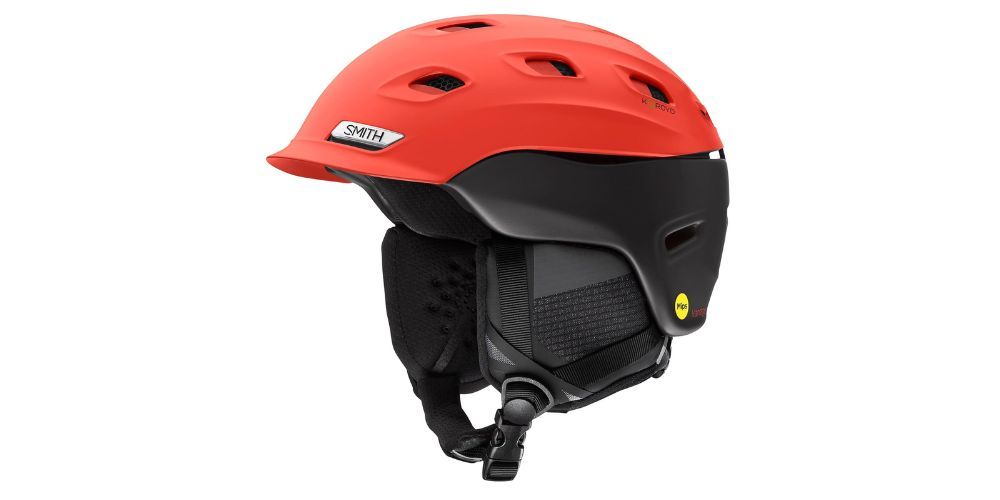
Price and Value
The price of ski helmets is not just a number; it represents the combination of safety, technology, and comfort that you’re investing in for your protection on the slopes. The cost can fluctuate based on the features offered, ranging from basic models to high-end options. For example, while budget helmets like the Giro Ledge MIPS provide essential safety at around $60, premium models such as the Smith Vantage MIPS can soar over $200 but offer advanced technologies that could make a difference in performance, comfort, and safety.
Budget vs. Premium Options
When weighing options, consider what you need most: do you prioritize basic safety or are performance features more critical? Budget helmets serve their purpose adequately if you're a casual skier sticking to easy runs. However, investing in a premium helmet often means access to superior construction materials like hybrid forms that blend hard shells with foam liners for better impact absorption. These helmets sometimes feature advanced ventilation systems, ensuring greater airflow to keep you comfortable throughout your day on the mountain.
A more expensive helmet may seem daunting at first glance, but it’s worth analyzing long-term benefits closely.
Cost-Effectiveness
Investing in a quality ski helmet can yield significant returns when it comes to durability and injury prevention. A helmet that lasts through several seasons without compromise saves money on replacements and offers peace of mind about protection too. You might find yourself skimping on spending to save today but watch those costs accumulate if you have to replace cheaper helmets every few years due to wear and tear.
Moreover, many premium models come with warranties or guarantees against defects that further cement their value. While the upfront costs may be higher, consider it an investment into your well-being with potential savings down the road—both in terms of medical expenses and repeated purchases.
As you navigate this spectrum of prices, it is helpful to consider insights into various brands to ensure you're making an informed decision on your next ski helmet purchase.
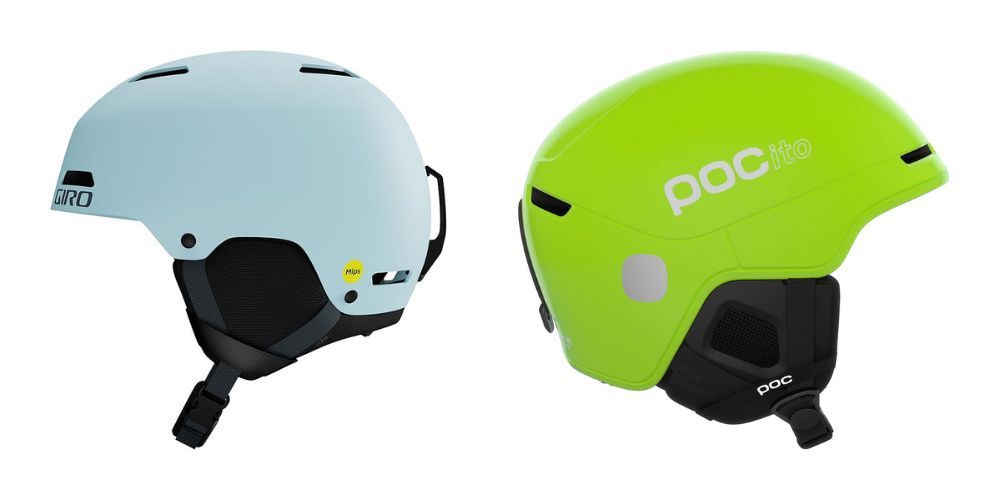
Popular Brands and Models
In the realm of ski helmets, certain brands have consistently risen to the forefront due to their commitment to safety, comfort, and innovative designs. Take Smith Optics for instance. Their models like the Smith Vantage and Smith Mission illustrate why they're well-regarded in the industry.
The Vantage features a sleek aesthetic and advanced technologies such as MIPS (Multi-directional Impact Protection System) and Koroyd. These innovations work together to absorb impact energy while maintaining optimal airflow—a significant advantage during sweaty descents.
Similarly, Giro has established itself with robust offerings in the helmet market, appealing to both casual enthusiasts and seasoned professionals alike.
The Giro Ledge and Giro Range MIPS are prime examples of helmets that balance affordability with high-end performance. The Ledge’s skate-inspired design makes it particularly attractive to snowboarders, while the Range MIPS provides superior protection without sacrificing comfort. Giro helmets often include features that enhance fit and usability, such as adjustable venting systems, ensuring skiers can keep their cool in challenging weather conditions.
Then there’s POC, known for its unique blend of performance and cutting-edge safety technologies.
Models like the POC Obex SPIN and POC Auric Cut cater to elite athletes while also appealing to enthusiasts who prioritize safety without compromising style. The SPIN technology protects against rotational forces during crashes, which is increasingly important as skiers push their limits on steep terrain or in terrain parks. POC’s emphasis on visibility through bright color options enhances safety on the slopes—an often overlooked aspect of helmet design.
When exploring these popular brands, it's essential to look beyond just their reputations. Research user reviews for real-world performance insights. Evaluate which specific features matter most to you—whether weight, ventilation, or extra padding—and match those preferences with the offerings of these leading brands. This way, you’re not just buying a helmet; you’re investing in peace of mind while enjoying your time on the slopes.
In summary, choosing the right ski helmet from trusted brands ensures you're equipped with optimal safety features designed for performance and comfort on the mountain. Prioritizing your needs will make your skiing experience safer and more enjoyable.
AUTHOR
Nature's Playbook
As an Amazon Associate I earn from qualifying purchases.





